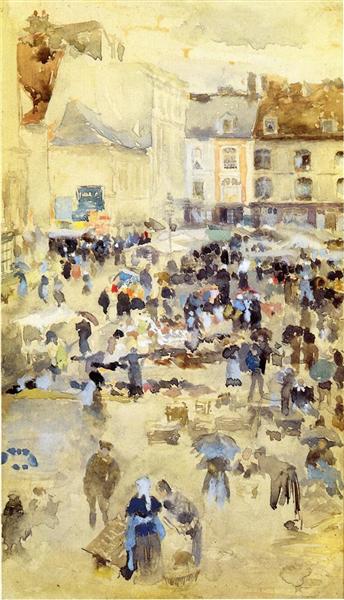a short history of the waltz

“Waltz“ (1891)
________
inadvertently, during my last comments,
I let slip, perhaps, prematurely – cause I
thought I’d explore earlier Romantic
pieces first, more Beethoven, more
Paganini – the word waltz, when I
referenced the “Minute Waltz”, a dance
which expressed a sea change in
Western cultural history made
manifest through music
though the waltz was already the rage
in lowlier social circles in the late
1700’s, the minuet still held sway in
the more aristocratic salons, whose
young swains nevertheless would
skip out to ferret out the servants’
quarters, as young swains do
slowly the dance, for its more
informal aspects, not to mention
its sensuous intimacy, became so
astonishingly mainstream as to
define pretty well the very century,
Chopin and the Strausses, Father
and Son, would take care of that,
the last two making a carnival out
of very Vienna
but until the late 1820’s, not much
was heard of the waltz in the
musical curriculum, at which
point it’ll come in with a vengeance
not much from Beethoven, who, in
his fifties, was probably about as ,
interested in waltzes as I am in hip
hop, a ditty only, a trifle, this one,
1824, one of only two waltzes
from him
here’s Johann Strauss l, however,
his “Carnival in Venice“, 1828, is a
waltz in “Carnival“ clothing, like
cadenzas, for instance, in the
guise of Paganini “Caprices”
here’s Johann Strauss ll, the son,
with his “Wiener Blut“, “The Spirit
of Vienna“, electrifying, 1873, the
late already 19th Century
but here’s Chopin doing his stuff,
1847, right in the middle of both,
from far away Paris, which was
going through its list of Empire
changes right about then, his
Waltz in C-sharp minor
Chopin’s waltz is a more decorous
composition, more courtly, more
also introspective, contemplative,
private, indeed Romantic
note how strongly the Classical
unities still apply here, tempo,
tonality and repetition, even more
markedly than in Beethoven, Chopin
is Mozart, but with more sentiment,
and perhaps more rubato, stretching
the rhythm in composition to
accommodate a dancer’s presumed
dip, in his otherwise meditational
compositions
the waltz will undergo trials and
tribulations later, as the world
turns, but I’ll keep those
reflections for later
meanwhile, choose your partner
R ! chard








